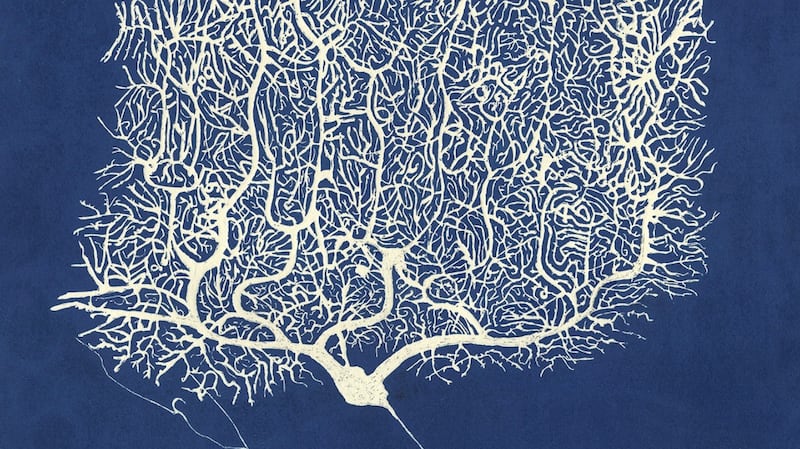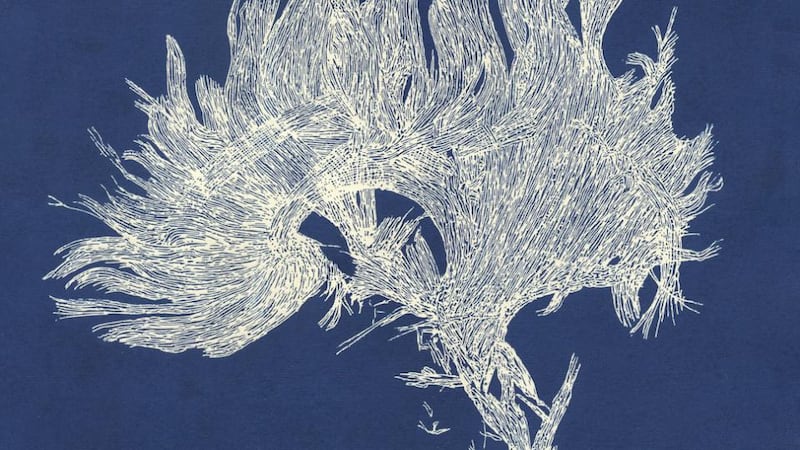A 14-metre long, tapered tube of galvanised steel lies outside Chester Cathedral. There's a doorway, and a ramp to encourage you inside. Is it a torpedo, or an escape pod? It's hard to say, but its maker, artist Eilís O'Connell, knows that her Capsule for Destinies Unknown is about hope, however fragile.
The cathedral is an atmospheric place in the northwest of England. The oldest part dates back to 1093, and O'Connell's Capsule is there, alongside work by 50 other artists, including Damien Hirst, Lynn Chadwick, Antony Gormley and Elisabeth Frink for Ark, an enormous exhibition of contemporary sculpture.

"I got an invitation," says O'Connell, when I meet her at her studio, a converted dairy in rural Co Cork. She's tactfully bashful about being part of that international level of artists, but award-winning commissions across Ireland and the UK, including at Trinity College Dublin, London Docklands and Chatsworth House, proves she belongs.
She's also part of that exceptional generation of Irish artists that includes Alice Maher and Dorothy Cross. "I can do it," she says. "I deliver, and I love the challenge of doing a big new piece." Capsule was made with Crowley Engineering in Cork. "They do the huge grain silos you see around the place, they love solving problems."
We’re sitting in what was once the huge fridge of the old dairy. It’s now a kitchen, adjacent to her bright and airy studio. Outside are massive sculptures: there’s a curling piece, like a snake twisting in on itself, that O’Connell is considering trailing a plant up; and a large pair of forms that are both organic and also oddly futuristic, one covered with an iridescent sheen. They’re all enormous.
She shakes her head ruefully when I ask her about whether size matters, but comes alive at the same time. “I love that scale. Even in art college, I made big things.” Where does she think it comes from? There seems to be an innate fragility to O’Connell, although it’s easy to imagine her getting passionately determined when it comes to her work.
“My father used to make boats,” she recalls. “We lived in Bridgend, up in Donegal. He worked in Customs, and he used to buy old wrecks. Our garden was full of bits of boats. I’d get parts of them, I can still see the colours, and I’d make things. My mum was very creative too,” she pauses. “Yes, it was idyllic.”
We talk about accents. She’s good at them, switching from Derry (where she was born), to Donegal, to Cork, to London in an instant. “I love accents,” she laughs, her large, green eyes smiling. “I was in a choir too, but I didn’t keep it up. Art takes over your whole life, there’s no room for other things. I’m a bit addicted. If I’m away from it for too long, I crave it.”
Having studied at Cork’s Crawford and in Boston, residencies brought her to New York and then to London, before returning home in 2002. It was bereavement that brought O’Connell back. “London’s not a place to be grieving,” she says, simply. “Life is wonderful, then you go into a phase of bad things happening.”
We move on the studio. "I'm working on two commissions. One is for Ten Molesworth Street in Dublin, it's a big bronze piece for the courtyard, very organic, it's called Unfurl.
“I can never explain my work. It starts with physical manipulation, and sometimes you know what you want and just do it, sometimes it takes weeks. I begin to imagine how people will use the space, how they’ll move around it, and see the work in my head.”
On the end wall is a huge fibreglass and resin gunnera leaf. “That was from my RHA show. I wonder where it’ll end up. I’d rather like that corner back.” There is a pile of lotus leaves she bought back from China. She turns and smiles, “I found you can get them in Cork”.

The studio is the type of space that makes you want to make things. There are nests in resin. A skull. O’Connell strokes her sculptures as she passes, like they’re beloved dependants. There are shelves of smaller pieces in shades of green and blue. “It’s the colour of oxidation you know. But here’s the brilliant thing about bronze: if I got this buried in a hole,” she says, holding up a particular piece, “it would come out nicer than it went in. In the National Museum, you see these precious things that were buried for safety, and they’ve come up gorgeous. I kind of think that after the apocalypse, these things will be here.”
The blues and greens are gorgeous, but she says she is “kind of scared of colour, but then I’m not a painter. Except for my watercolours, I do them when I don’t feel like physical work.” Later, she’ll show me a draw of her paintings. Sheaves of jewel-like abstracts that are gentle, poetic and beautiful. She doesn’t exhibit them, “sometimes I give them as presents to friends”.
In a plastic box on the studio floor are more, torn into pieces. “I just did that, it’s so liberating.” She’s going to make paper, and mix the shreds into the pulp “You’ll see bits of the drawings in the paper when it’s made, but I’ll need good weather.”
On a table, are two beautiful prints made with Dublin's Stoney Road Press earlier this year. They look like intricate trees on a deep blue background: "They're from MRI scans of the brain." Does it annoy her when people don't get her work? I'm thinking of these prints, but also her Arts Council-commissioned Great Wall of Kinsale sculpture, which caused controversy when it was installed in 1988, and later featured in The Irish Times Modern Ireland in 100 Artworks series.
“In England they ask: ‘What is it?’ In Ireland they ask: ‘What does it mean?’ I think about the difference. No, I don’t get upset. I don’t get a lot of things myself. It upsets me when they’re rude though. It’s only an inanimate object after all.”
- ARK is at Chester Cathedral until October 15th, chestercathedral.com; O'Connell's prints are available in an edition of 40 from Stoney Road Press, €675 each stoneyroadpress.com











